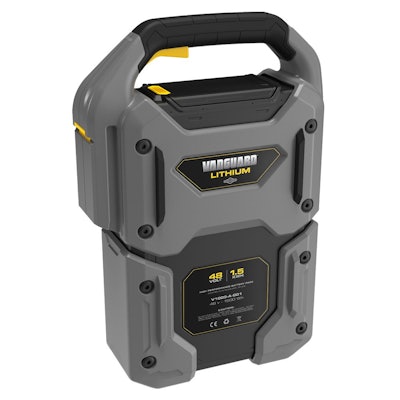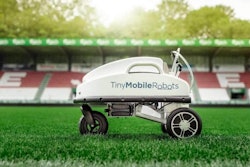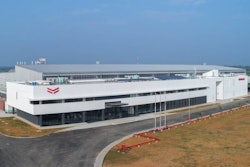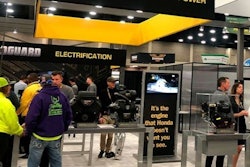
Battery-powered equipment is taking the lead in the landscape and lawn care industry, as many contractors and landscapers are switching their from gas and corded electric, to battery-powered. There is no denying the consumer demand for a reduced carbon footprint, and this is the green industry’s contribution to that new standard.
“In the past year, we have seen substantial interest in battery-power technology, especially in cities and states where emissions regulations are emerging,” says Nick Moore, director of sales electrification, Briggs & Stratton. “Additionally, advancements in, and awareness of, electric automotives have driven people to take a closer look at battery-powered outdoor power equipment.”
With new industry standards and bills being passed, there are more reasons why landscapers may be interested in switching their fleet to be all-electric. For starters, the overall maintenance cost, lifespan, efficiency and sustainability are not compromised. There may be a larger upfront cost for fully electric equipment, but does it pay for itself for the long haul?
 Briggs & Stratton
Briggs & Stratton
How Does it Compare?
There is no denying that gas-powered equipment, can be more expensive than almost any battery-powered tool. And with gas products, there is more than what meets the eye. According to housegrail.com, products that require gas for power require more maintenance than their electric counterparts. For instance, service on the engine will require replacement filters, spark plug cleaning and other engine-related maintenance. Don’t forget these all require proper preparation for the colder months like draining the fuel and using additives.
“Price also depends on how much battery power is on board, as well as motor and controller performance levels,” says Moore.
Comparing gas to electric, gas might win every time it comes to power. However, battery-powered equipment may have a longer lifespan and better usability. They are lighter overall and do not require as much maintenance. There is almost nothing better than using lighter equipment, reducing operator fatigue and allowing the equipment to perform more jobs before needing any maintenance work. This contributes to efficiency on the jobsite, as well as usability. Where battery-powered equipment may lack power, it makes up in efficiency, usability and sustainability.
“With gas-powered equipment, you have to consider the size of the engine in order to accommodate for the maximum load needed to get the job done,” Moore continues.
Let’s not leave out corded electric equipment, as it typically provides more power, but there is always the risk of accidentally unplugging the tool. So, which is going to help get the job done faster?
“For instance, Vanguard Lithium-Ion batteries have a lifespan where after 2,000 cycles you will still have 80% of the original capacity, a cycle being a full discharge and then charge back to 100%. So, over time, your run time will reduce, but it is really up to the user to determine when it gets too low that they may want to replace the battery,” says Moore.
 Vanguard 5kW batteryBriggs & Stratton
Vanguard 5kW batteryBriggs & Stratton
To break it down in simple terms, gas-powered tools will provide more output power, which can mean you are spending less time cutting a branch or edging the grass. But the equipment is going to be heavier due to the engine inside. This may cause the user to work slower due to fatigue.
There is the idea that battery-powered equipment won’t provide as much power, but is that true? We do know that battery equipment gives users freedom to move about the entire jobsite, requires less downtime for maintenance, and are lighter in weight. Lastly, although corded-electric tools provide a comparable amount of power as gas and battery equipment, they do not provide the same usability on a jobsite as they have limited range and there is the risk of accidentally unplugging the tool.
As previously mentioned, there is a push for reducing the carbon footprint and there is no better time than now to hop on that bandwagon. The green industry is working to make the equipment contractors need to perform their tasks at each jobsite more efficient and more eco-friendly. Two types of equipment offer this feature and those are the battery-powered and corded-electric power equipment. Considering all of the limitations that come with a corded-electric tool, it might be outdated for the work and demand of contractors.
 Briggs & Stratton
Briggs & Stratton
New Components and Technologies
Every battery is different, but one trend the industry is seeing is the ability to monitor the health of the battery. There is no worse timing than to be at the jobsite, working and the battery unexpectedly dies on you. Do you have a replacement? Was that the replacement? Or will you have to try to recharge the battery or use another tool?
These are all things that one must consider when getting battery-powered equipment and using it for bigger projects or for multiple projects a day. However, there are ways to combat the unknown and allow yourself as a landscaper an efficient and a completely finished job for your customers. You can do this with the new batteries in the market.
Vanguard batteries also have an inherent battery management system, which helps users monitor the health of a battery and ensure they are maintaining top performance. Make no mistake, there is always room for improvement. Although batteries are constantly being upgraded and created with new features and designs, there are still some limiting factors to consider. For instance, the run-time of battery-powered equipment could use some improvement based on common concern in the industry.
“When we are working with OEMs, a concern we hear often is balancing the run-time needed while keeping equipment costs down. Equipment manufacturers want to eliminate a customer’s 'range anxiety' without making the machine overly expensive,” Moore says. “As a power solutions provider, we’re helping OEMs find that sweet spot of power and cost efficiencies as the electrification market grows.”
Misconceptions
There are many misconceptions about batteries. Users may be concerned about battery life, efficiency, power and on topic of sustainability, whether or not the batteries are recyclable, and they are by the way.
Many consumers are misinformed about the current batteries offered in the market.
“There’s been this misconception around batteries that they offer lower power compared to gasoline-powered engines. In reality, the power a battery can offer oftentimes meets or exceeds the need of the application," says Moore. “Another misconception is that battery power can’t handle the elements. It’s especially important for the professional landscape audience to understand that today’s battery solutions are built tougher and tested under severe conditions. This ensures the battery can deliver a consistent and powerful performance in harsh environments and applications.”
So, does battery equipment compared to gas or corded electric? One might say that it’s an overall better option.
 Briggs & Stratton
Briggs & Stratton
When to Switch
According to Moore, landscape professionals will most likely make a complete switch to battery-powered equipment when some of those limiting factors are improved, such as the run times, cost factors, as well as regulations and restrictions. Other benefits that will be considered will be the benefits to end-users, like reduced noise levels and lower vibration and improved operator comfort. More and more, users are becoming comfortable with electrified products and their ability to meet needs on the jobsite.
“As a power solutions provider that offers both battery and engine products, we’re constantly evaluating the state of the industry and listening to the feedback and needs of our customers. We are closely working with OEMs, understanding their pain points and offering solutions that help them do their job and be successful in a world with changing demands,” Moore continues. “Wherever the industry takes us, Briggs & Stratton and Vanguard will be there to offer powerful products our OEMs and their customers can count on.”


![Doosan Bobcat Wacker Neuson Stack 2ec Js Pb V6e[1]](https://img.greenindustrypros.com/mindful/acbm/workspaces/default/uploads/2025/12/doosan-bobcat-wacker-neuson-stack2ecjspbv6e1.CPyyz8ubHn.png?auto=format%2Ccompress&bg=fff&fill-color=fff&fit=fill&h=100&q=70&w=100)








![Doosan Bobcat Wacker Neuson Stack 2ec Js Pb V6e[1]](https://img.greenindustrypros.com/mindful/acbm/workspaces/default/uploads/2025/12/doosan-bobcat-wacker-neuson-stack2ecjspbv6e1.CPyyz8ubHn.png?ar=16%3A9&auto=format%2Ccompress&bg=fff&fill-color=fff&fit=fill&h=135&q=70&w=240)








